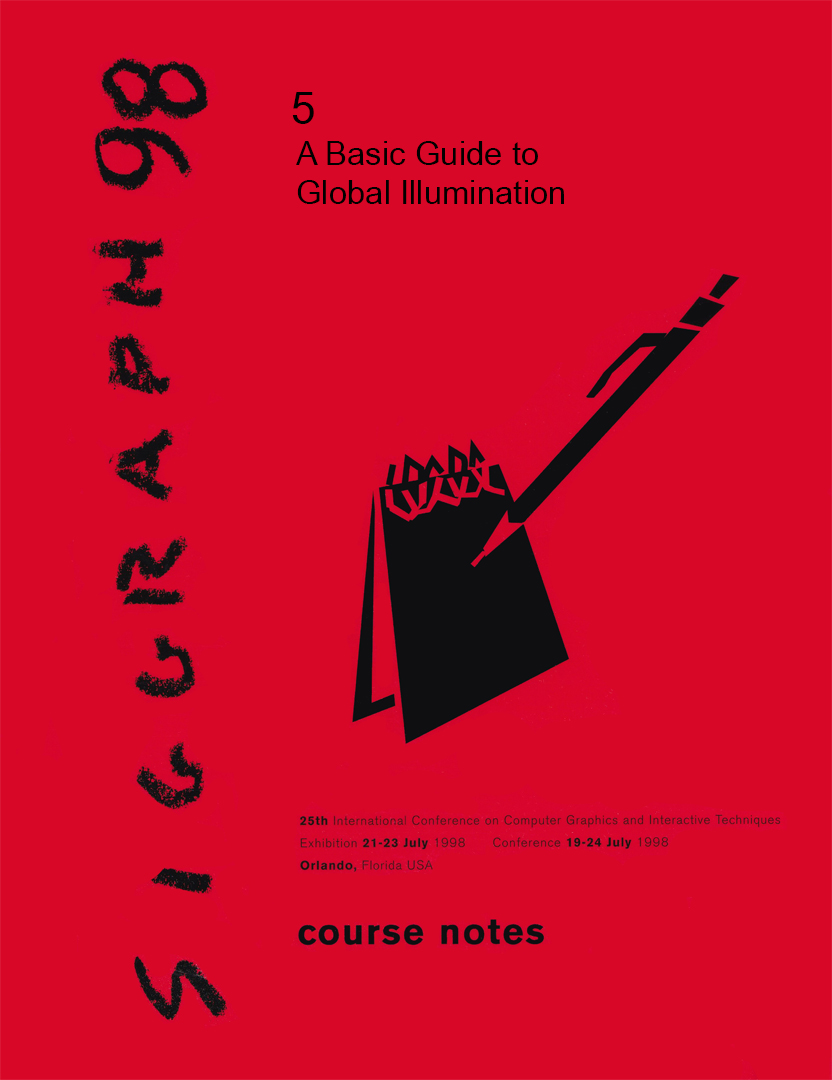“A Basic Guide to Global Illumination” by Rushmeier, Banks and Shirley
Conference:
Type(s):
Title:
- A Basic Guide to Global Illumination
Organizer(s):
Presenter(s)/Author(s):
Entry Number: 05
Abstract:
Prerequisites
Beginning experience with graphics, including representation of geometry by polygons specified as lists of vertices. Familiarity with physics and math at a level provided by first-year college courses in physics and calculus also assumed.
Topics Covered
The course presented a model of image formation in which RGB values in an image are determined by a global illumination method. It also presented the physical equations that govern global illumination, how these equations relate to image RGB values, and ray tracing and radiosity as they relate to these equations.
Description
The goal of global illumination methods is to simulate the path of light in an environment through the image plane in order to compute realistic images. Not all applications require the accuracy attainable with global illumination methods, and not all global illumination methods are good for all possible lighting effects. In this course, comparison of physical experiments provided insight into the basic methods. The target audience: people who are new to graphics, who teach and work in other areas of graphics, and who might want to understand how these methods differ from other rendering techniques.
Contributed By:
- Mary Whitton
Location:
- Charles Babbage Institute Archives, University of Minnesota





